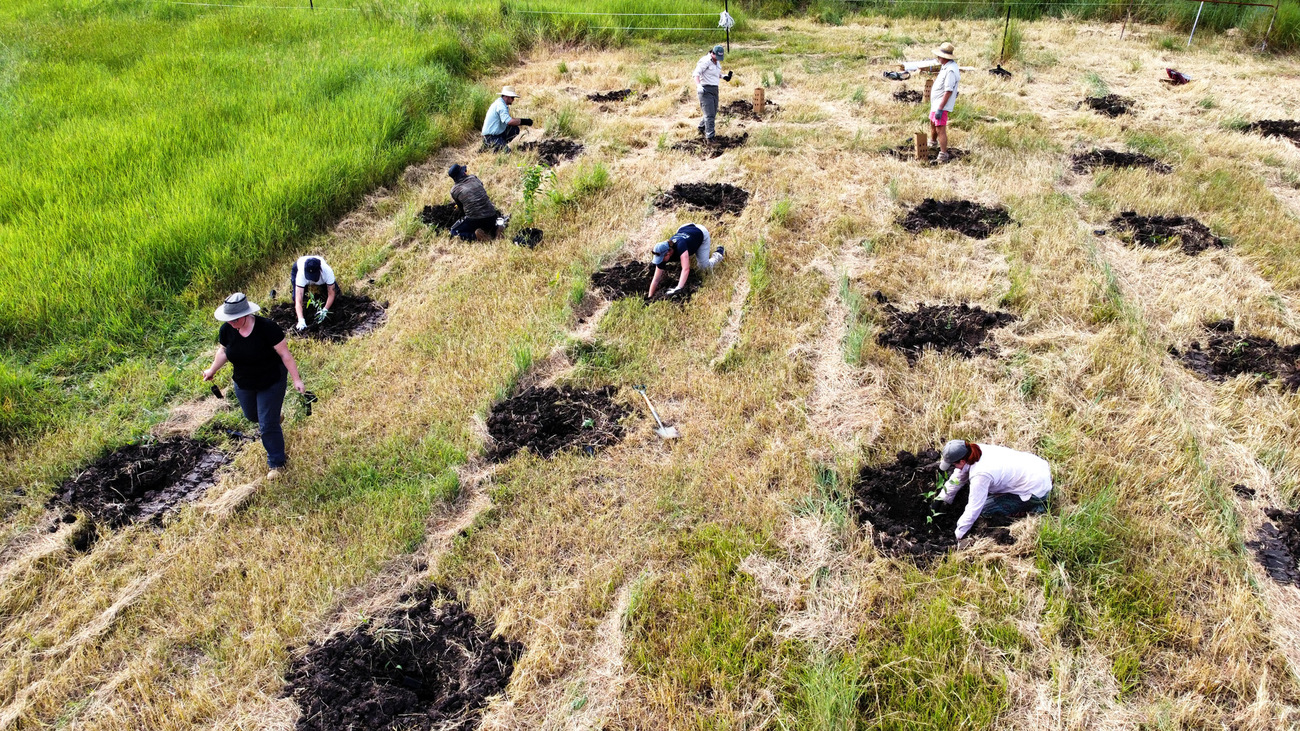Koala Protection: Rescue, Rehabilitate, Release, and Secure - Australia, New South Wales
Planting a future for koalas, one tree at a timeDrinking stations to provide water for koalas and Australian wildlife
Drinking stations to provide water for koalas and Australian wildlife

Wildlife drinkers which provide koalas and other native animals with a reliable source of water during droughts and after bushfires are being hoisted up into trees in Australia.
The initiative forms part of Koala Climate Corridors, a project spearheaded by the Great Eastern Ranges and IFAW to help wildlife adapt and communities build resilience to climate change. Lockyer Uplands Catchment Inc (LUCI) is leading the project in the south-east Queensland.
Landholders will install 47 Tree Troff® water drinkers provided by WIRES across the first climate corridor, Bunyas to Border, which stretches from the Bunya Mountains to the Border Ranges.
“Bunyas to Border is about creating a corridor along the ‘western horn’ of the Greater Border Ranges that enables local wildlife to move and adapt in response to climate change and provide them with vital refugia to retreat to during bushfires, floods and droughts,” Gary Howling, CEO of Great Eastern Ranges said.
IFAW Wildlife Campaigns Manager Josey Sharrad said landholders are the essence of this project.
“With koalas now endangered, it is critical communities lend a helping hand to this species on the brink. Landholders willing to make their properties more wildlife-friendly are an invaluable part of the solution. These water stations, along with the planting of trees, will provide a crucial lifeline for koalas and other wildlife,” Ms Sharrad said.
Justine Rice, local project coordinator for Koala Climate Corridors says providing supplementary water is incredibly important, especially in south-east Queensland where there are declining koala populations and more frequent droughts.
“The aim is to try and prevent koalas from having to come to the ground as often where they are at a greater risk of being trampled by cattle, hit by cars or attacked by dogs. Providing supplementary water becomes incredibly vital in those tough times when koalas are going to be most at risk and are not going to get the water they need from their food,” she said.
The drinkers will provide hydration for the corridor’s other wildlife including tree-dwelling mammals and climbing reptiles. Landholders are also being engaged to reconnect and expand core habitats by planting native vegetation and installing nest boxes.
Kia Lech, whose property sits in the region, is one of the landholders involved. Her family has installed a wildlife drinker on their farm and had 400 seedlings planted. The plants will create stepping stones of habitat for koalas, greater gliders and other animals moving between their land and neighbouring properties.
“There are not many trees on the property at the moment and we have always been interested in giving back a little of wherever we are to wildlife. It was a match made in heaven when the Bunyas to Borders project came along,” Kia said.
“There have been a number of droughts recently. It’s about making sure there is some kind of water source available that native wildlife feel able to go to. It is also about encouraging the koala population to come back into those blue gums."
The drinker will be installed in an established stand of blue gums on the property where there are clear signs of glider and owl activity.
Cameras have been installed around some of the drinking stations and nest boxes to monitor what animals use them.
ENDS
Press contact:
Dominica Mack, IFAW
dmack@ifaw.org
0460 432 901
About the International Fund for Animal Welfare - IFAW is a global non-profit helping animal and people thrive together. We are experts and everyday people, working across seas, oceans and in more than 40 countries around the world. We rescue, rehabilitate and release animals, and we restore and protect their natural habitats. We partner with local communities, governments, non-governmental organisations and businesses. Together, we pioneer new and innovative ways to help all species flourish. See how at ifaw.org
About the Great Eastern Ranges (GER) – Since 2007, the Great Eastern Ranges has brought people together to stem the loss of native wildlife and their habitats, provide natural solutions to the climate crisis, protect precious resources, and ensure thriving, resilient landscapes and ecosystems for nature and people. Today, we are one of the world’s largest conservation initiatives, delivering environmental, health, cultural and socio-economic benefits across eastern Australia through our extensive network of local, regional, and national partners.
Related content
Every problem has a solution, every solution needs support.
The problems we face are urgent, complicated, and resistant to change. Real solutions demand creativity, hard work and involvement from people like you.